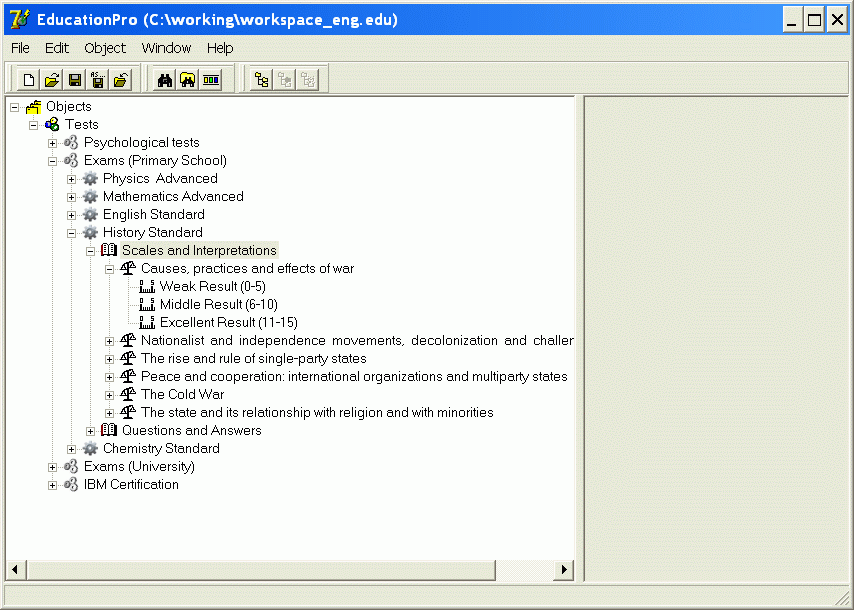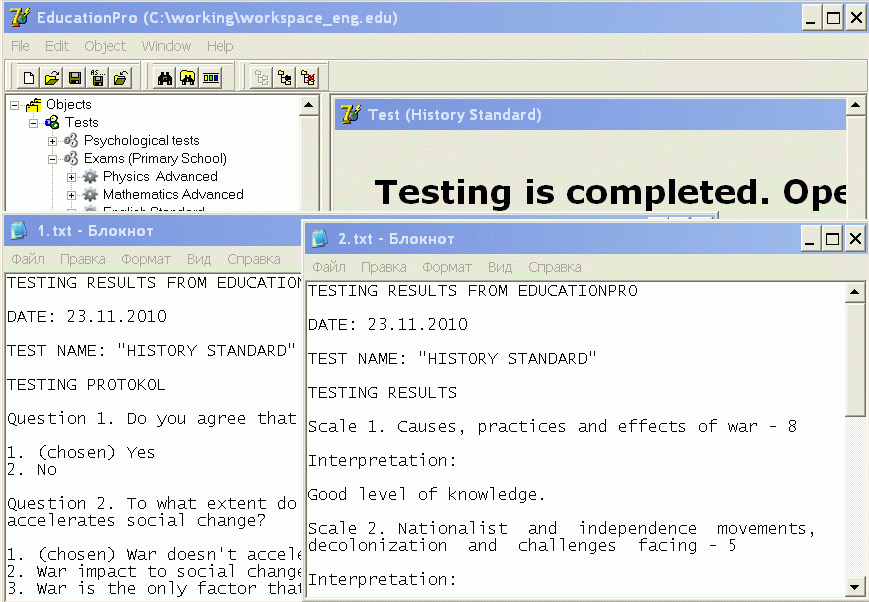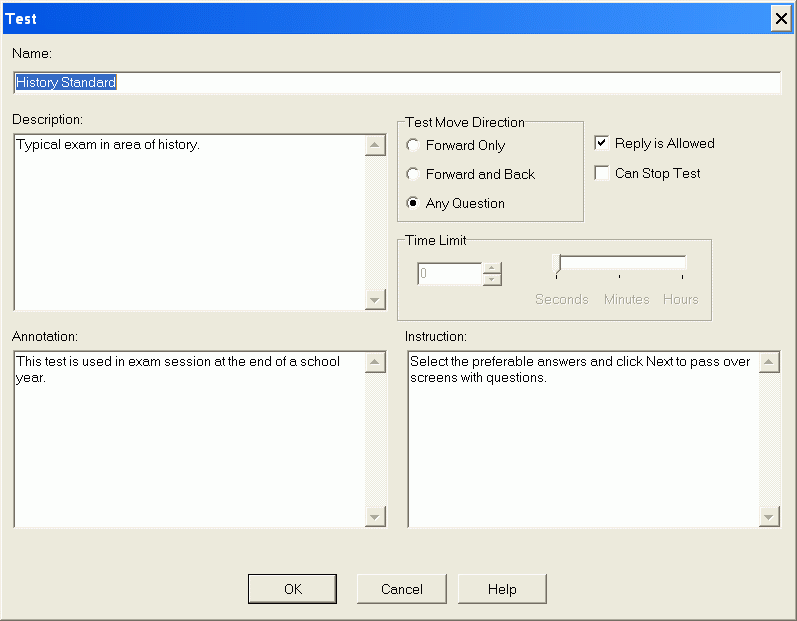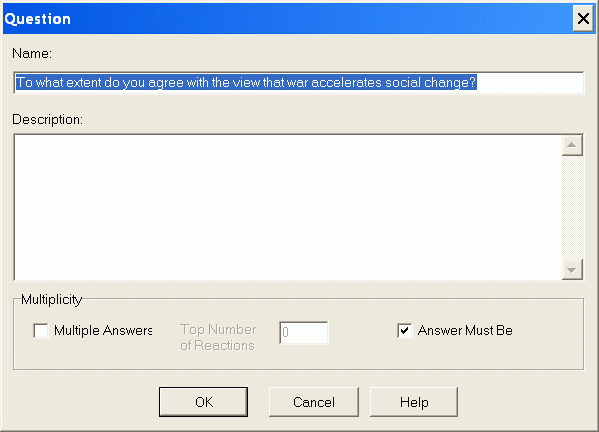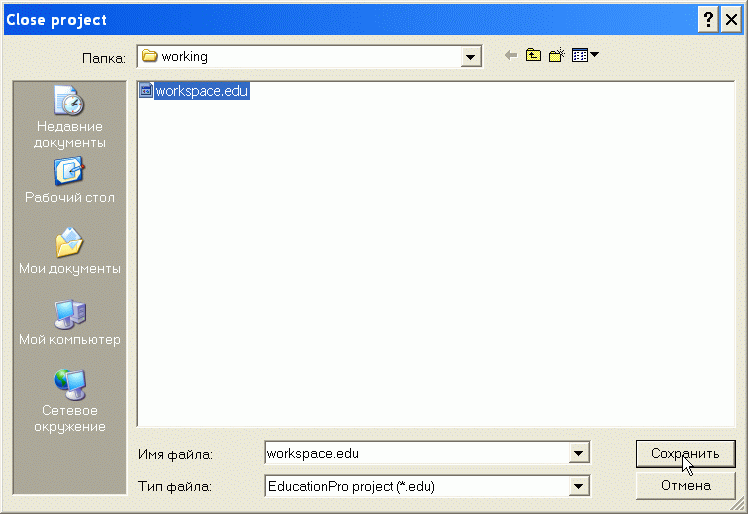Main Window
Sindy graphic user interface (GUI) contains two global sections: Test Constructor (it's designed as a tree of arranged test elements) and special workspace for running constructed tests. The program is based on so called Multiple Document Interface (MDI). It means that there's a secondary panel (displayed on the right) where multiple child windows can be created. In this way, you can run a number of test all together, and they will execute independently from each other.
Test Structure - Questions, Answers and Weights
Test can contain many questions, and a question can contain multiple responses. When a test is run, you can select the responses displayed on screen. As well, you can define weights for answers. Weights are special values linked to test scales. When somebody is participating in testing,, and he/she selects a test answer, then the weights of this answer will be used to calculate the common testing results based on related scales.
Test Structure - Scales and Interpretations
Besides, a test can define some number of scales which describe predefined areas of research. Testing results are really the values calculated based on known scales. A scale can contain interpretations which are used for building the final testing reports. An interpretation defines a range with minimum and maximum for parent scale. As well, an interpretation can contain a test description which is directly used in a testing report if a scale result is inside of interpretation range defined by the minimal and maximal values. Such an approach enables to automate almost any testing procedures, and significantly decreases the time and increases the reliability when calculating the testing results.
Test Player
Test can be executed in full screen mode. It gives big advantages when you would like to exclude an impact of any other screen elements to a person during testing activity. It helps to get most relevant testing results when somebody under test will concentrate on the test questions only.
Testing Results
When testing is ended, consultant can quickly get final Testing Protocol (this is a list of test questions displayed during testing and the groups of respective pointers to responses to see the reactions selected by a client) and Testing Report (this is a list of testing results with calculated values and text interpretations grouped by scales and corresponding to the answers done).
Test Configuration
Both for a test for any test element (they can be questions, answers, weights, scales or interpretations), you can provide a title and a description. Additional fields, such as annotation and instruction will be used available during testing itself. An instruction is displayed on the start of test, and it provides additional explanation for a tested person how he must behave during testing. An annotation provides additional info about the test itself.
Question Configuration
You can set a special answering mode as a property of a question. For example, you can define whether a tested person will be able to select a single answer or several answers at once. As well, you can define maximal number of answers which can be selected during testing. And you can set whether selecting at least one answer is a mandatory condition for the parent question.
Saving Data
The project data containing the test descriptions can be saved in project files in special format. In this way, you can create and save entire library of testing groups to apply them in diagnostics and research. You can move saved files between computers and send them to your colleagues. You can even sell the tests created by yourself or distribute them on any principles. After a group of tests was exported, it can be imported again to continue the work right with this data.



